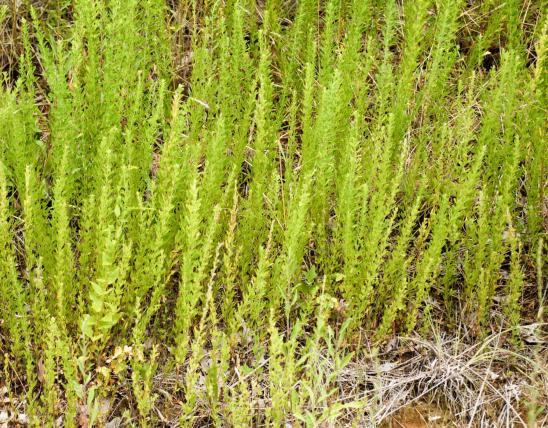Thunberg’s lespedeza is a large, nonwoody perennial shrub often cultivated as a showy, flowering ornamental or on roadsides. Leaves are alternate, compound with 3 leaflets, spirally arranged on stem; each leaflet 2 inches long, linear to elliptical; dull medium green. Flowers showy, pink to rose purple, each flower ½ inch wide, in the typical pea-family configuration. Flowers many, in upright, long, curving racemes 3–6 inches long. Blooms August–October. Fruit black seeds formed singly in a legume pod, maturing in late fall.
Height: 8 feet; spread: 8 feet.
Scattered statewide, in cultivation.
Habitat and Conservation
A nonwoody shrub, it dies back to the ground every winter. People who cultivate it typically trim it to the ground in late winter or early spring. It tolerates drought and erosion and will grow on very harsh sites in average soil and full sun.
Human Connections
This plant, introduced from Asia, has been used for erosion control in road construction. Its arching, fountainlike habit and often spectacular late summer blooms make it a popular landscaping shrub for sunny areas. It can reseed itself and also forms new plants where stems touch the ground.
Ecosystem Connections
As with many other exotic imported plants that can naturalize, this plant can become weedy in some areas. In New Jersey, it has been declared an invasive plant. This is one reason we encourage people to use native plants in landscaping.
























